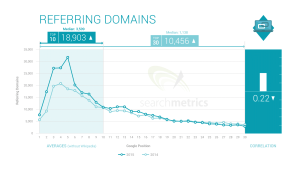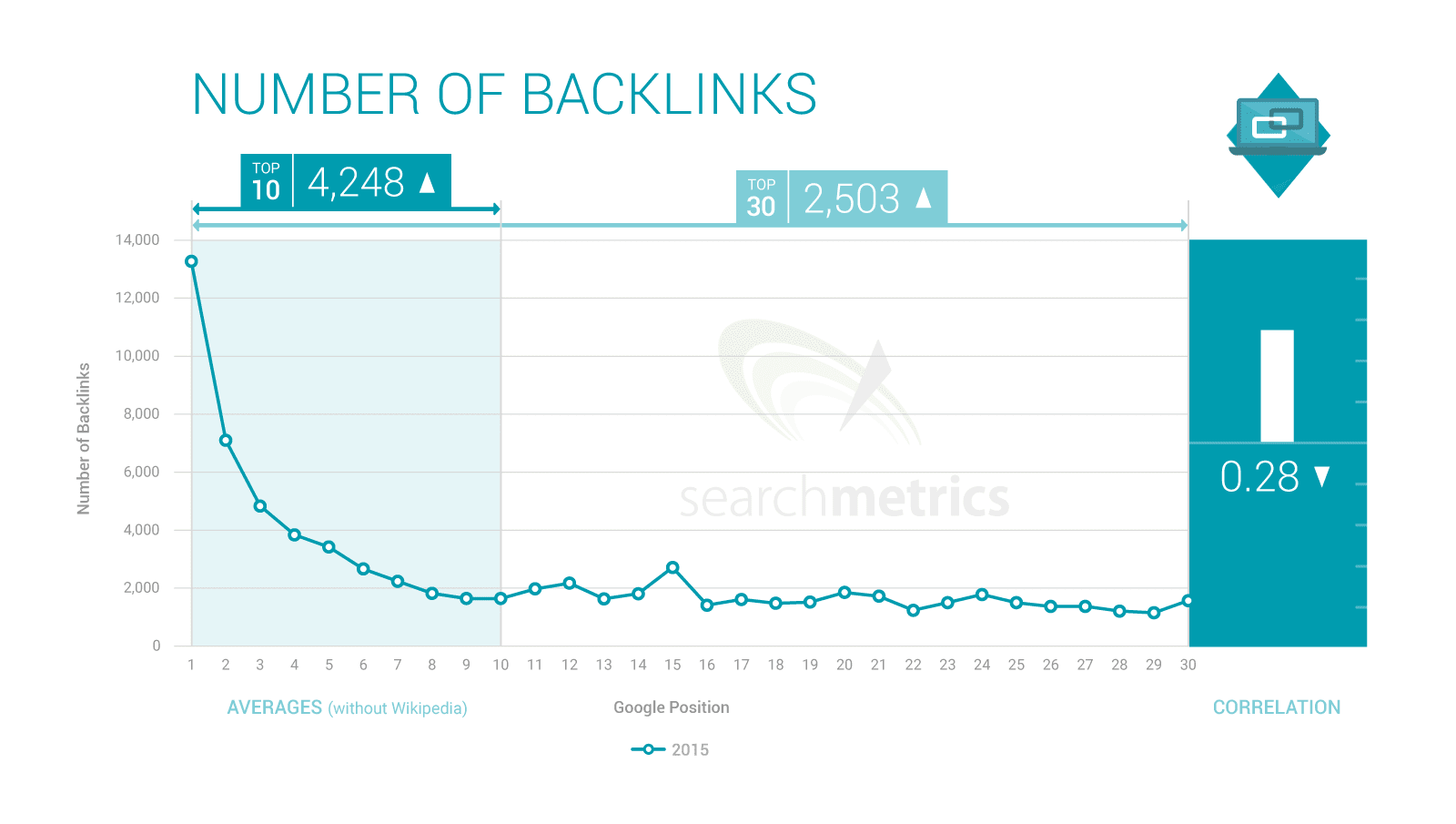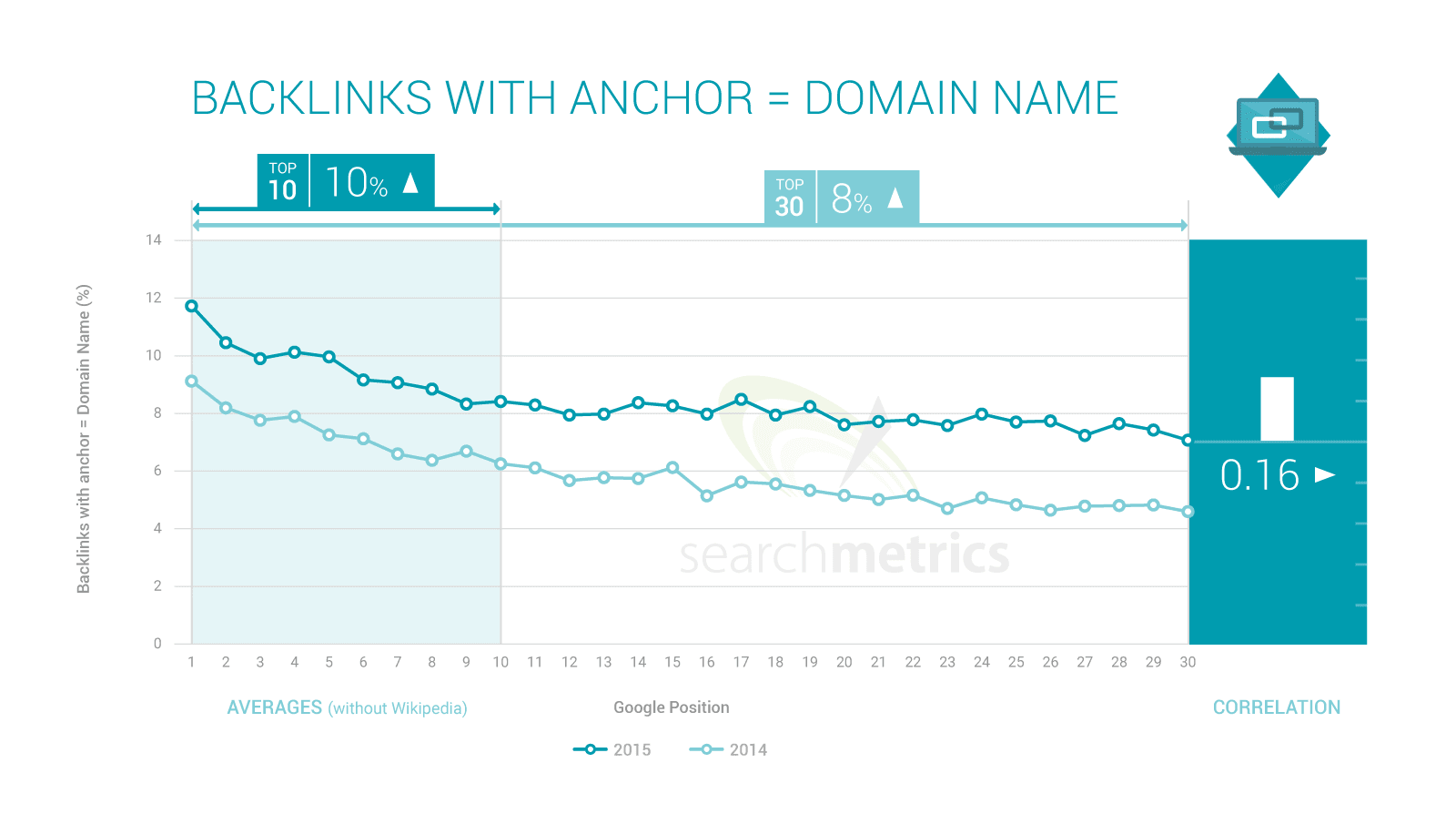
5 Backlink Metrics That Affect Your Website Rankings
5 Backlink Metrics That Affect Your Rankings
1. Number of Backlinks
The correlation between the number of backlinks that pages have and their ranking positions is 0.28.
Overall, while pages in the top 30 search results tend to have significantly more links than in previous years – the gap between those in the top position and the rest is narrowing.
2. Referring Domains
The number of different referring domains (i.e. the different sites where backlinks are coming from) was higher for the top 30 search results in 2015.
This trend is particularly true of large brands as they occupy the top ranking positions and it is here that the growth of referring domains is most clearly visible.
This makes sense because in general you would assume that a site that has links from a large number of separate sources is more popular (and more likely to be genuinely useful) than a site that has the same number of links from far fewer separate sources.
Indeed, if all the links came from one or two sources it begins to look a little suspicious and unnatural – perhaps there is some sort of paid linking scheme or an agreement to provide links.
3. Backlinks With Keyword in Anchor Text
The proportion of hard backlinks, which include the keyword in the anchor text, is falling. In 2014 29% of backlinks had the keyword in the anchor text – this year it had shrunk to 26% on average.
4. Backlinks With Keyword in Anchor Text
The percentage of links with the complete domain name in the anchor text is increasing, from 7% to 10% over the last year.
This is because Google realizes that it’s natural for people to use the brand name or URL (e.g. Tesco, Asda.com) when linking to other pages (in particularly, it’s much more natural than links with specific target keywords).
5. Backlinks from news sites


